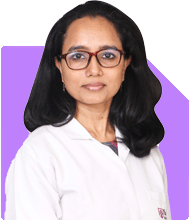Ramalingam Kalirajan |4184 Answers |Ask -Follow
Mutual Funds, Financial Planning Expert - Answered on May 15, 2024
He has an MBA in finance from the University of Madras and is a certified financial planner.
He is the director and chief financial planner at Holistic Investment, a Chennai-based firm that offers financial planning and wealth management advice.... more

I am 33 years old living with my wife. Our monthly expenses are 30000 per month. We have a corpus of 1.6 cr, invested in mutual funds, PF and sovereign gold bonds. We do not want to have kids, we already have a house(hence we will not need to pay any rent) and our parents are not dependent on us and have medical insurance as well. We are assuming a return of 10 percent on current portfolio and expect to live till the time we are 90(my wife is currently 28). What should be the retirement that we will need to build?
Assessing Current Financial Situation
With a monthly expense of 30,000 and a corpus of 1.6 crores invested across mutual funds, PF, and sovereign gold bonds, you've laid a solid foundation for your financial future. Your decision not to have children and already owning a house alleviates significant financial burdens.
Estimating Retirement Needs
To determine the retirement corpus required, we'll consider factors like inflation, lifestyle expectations, and longevity. Assuming a 10% annual return on your current portfolio and a lifespan of 90 years for both you and your wife, we can project your retirement needs.
Calculating Retirement Corpus
Using a conservative estimate and factoring in inflation at 6-7% annually, we can determine the corpus required to sustain your lifestyle till age 90. This entails covering monthly expenses, occasional expenses, and unforeseen circumstances.
Strategic Planning
Retirement Corpus Calculation: Based on your current expenses, inflation, and expected returns, we can compute the retirement corpus needed to maintain your lifestyle.
Investment Strategy: Given your risk tolerance and investment horizon, a balanced approach comprising equity, debt, and other asset classes can optimize returns while mitigating risk.
Regular Review: Periodically reassessing your financial plan ensures alignment with evolving goals, market conditions, and life circumstances.
Conclusion
By proactively planning for retirement and leveraging your current financial resources, you can achieve financial independence and enjoy a comfortable lifestyle throughout your golden years. As Certified Financial Planners, we're committed to guiding you every step of the way on your journey towards financial security and peace of mind.
Best Regards,
K. Ramalingam, MBA, CFP
Chief Financial Planner
www.holisticinvestment.in
You may like to see similar questions and answers below
Ramalingam Kalirajan |4184 Answers |Ask -Follow
Mutual Funds, Financial Planning Expert - Answered on Oct 26, 2023
Ramalingam Kalirajan |4184 Answers |Ask -Follow
Mutual Funds, Financial Planning Expert - Answered on May 20, 2024
Ramalingam Kalirajan |4184 Answers |Ask -Follow
Mutual Funds, Financial Planning Expert - Answered on Jun 13, 2024
Ramalingam Kalirajan |4184 Answers |Ask -Follow
Mutual Funds, Financial Planning Expert - Answered on Jun 26, 2024
Ramalingam Kalirajan |4184 Answers |Ask -Follow
Mutual Funds, Financial Planning Expert - Answered on Jul 03, 2024
Ramalingam Kalirajan |4184 Answers |Ask -Follow
Mutual Funds, Financial Planning Expert - Answered on Jul 03, 2024
Dr Hemalata Arora |201 Answers |Ask -Follow
General Physician - Answered on Jul 03, 2024
Dr Hemalata Arora |201 Answers |Ask -Follow
General Physician - Answered on Jul 03, 2024
Dr Hemalata Arora |201 Answers |Ask -Follow
General Physician - Answered on Jul 03, 2024
Dr Hemalata Arora |201 Answers |Ask -Follow
General Physician - Answered on Jul 03, 2024
Dr Hemalata Arora |201 Answers |Ask -Follow
General Physician - Answered on Jul 03, 2024
Dr Hemalata Arora |201 Answers |Ask -Follow
General Physician - Answered on Jul 03, 2024
Dr Hemalata Arora |201 Answers |Ask -Follow
General Physician - Answered on Jul 03, 2024
Nayagam P P |1163 Answers |Ask -Follow
Career Counsellor - Answered on Jul 02, 2024











.jpg)











